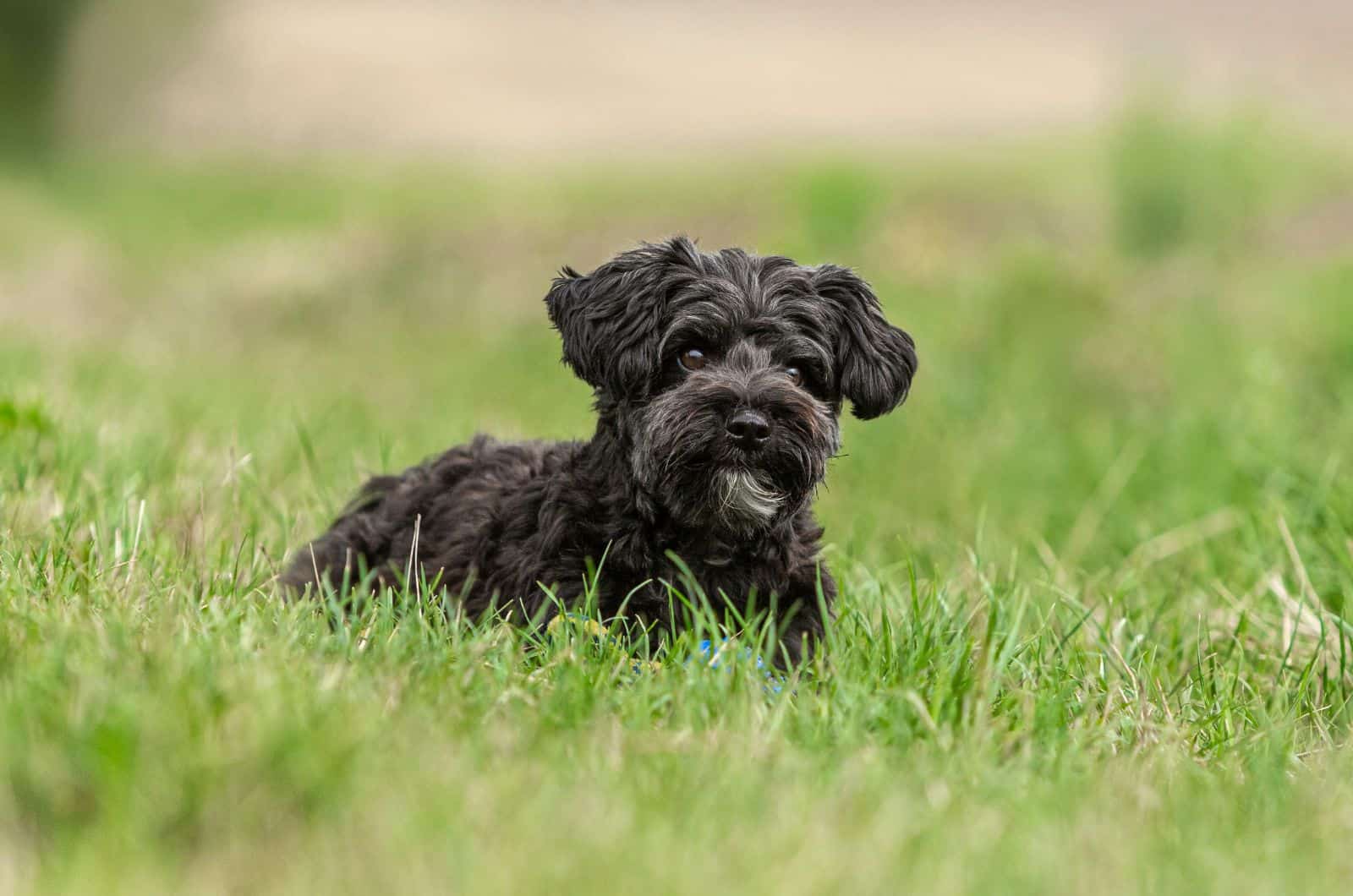It was always funny to me that the teacup-sized dogs could not fit into a cup. I tried larger cups and glasses, but only a soup or cereal bowl fit it. Why not call them cereal bowl Yorkiepoos, then?
No matter, the teacup thing probably has something to do with Victorian-age royalty keeping their toy Yorkiepoos close to their tea.
Having owned a Turkish Kangal and a Sarplaninac mix, a GSD, and currently, a Belgian Malinois, it still amazes me how tiny these dogs are! They are smaller than my sometimes-house cat!
Despite their looks and slight stature, they have proven to be pretty sturdy for the package. Enough chit chat… we have a lot of ground to cover here.
What Is A Teacup Yorkiepoo, And What Does It Do?
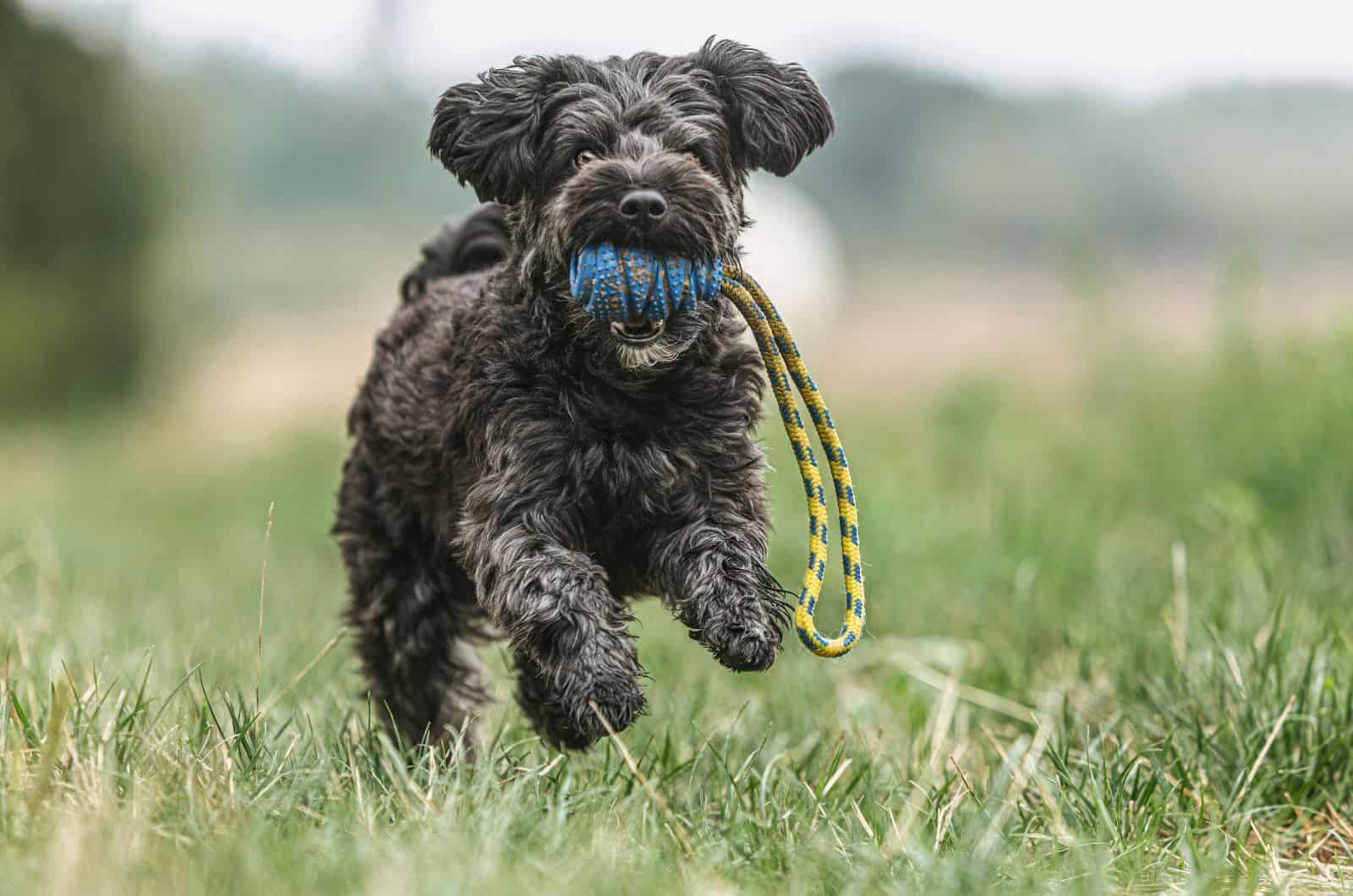
They call it a designer dog because it designs stuff. As highly trained tailors, artists, and fashion week approaches, you might not be able to book one.
They were actually bred to eradicate pests from mines. In this time and age, their role was mainly companion dogs that would double as a fashion accessory. And, what an accessory they were!
Let us move onto how some people came up with the idea of a crossbred small dog that zooms around tunnels.
Genesis Of The Yorkiepoo
I briefly mentioned the Teacup Yorkiepoo being a rodent hunter. It might sound funny or improbable, but it is true. Yorkiepoos pack a punch, I guess.
Working conditions underground are tough as it is. Small rodents were, and still are, one of the major disease spreaders. With the inception and birth of the Teacup Yorkiepoo, the miners’ lives were made easier.
Both parent breeds contributed their abilities to hunt, partly because of their ruggedness and athleticism. Then, as time passed, people realized that smaller dogs would fare better in tighter spaces. Additionally, the size would help the dog’s ability to turn tight corners while chasing rats.
Parent Dog Breeds: The Formula
Which breeds had the right traits for the Teacup Yorkiepoo to come to life? Well, the name is quite revealing, to be honest. I tried keeping it mysterious for as long as I could, but it is time for the great unveiling.
The Yorkshire Terrier from England, and the German-born Poodle donated their genetics for this Yorkshire+Poodle mix that turned out to be more than good. Gradually, smaller and smaller Yorkies and Poodles began to emerge.
It meant that the Yorkiepoo’s tiny representative was imminent. Choosing only the smallest Yorkies and Poodles from their respective litters and breeding them produced the smallest possible version of either dog – the toy Poodle and the teacup Yorkshire Terrier.
Up next: The toy Poodle.
Toy Poodle
Although the French claim the Poodle to themselves, the American Kennel Club considers the Poodle to be of German origin. The toy Poodle is a product of the modern era, and it was created by breeding the smallest Poodle specimens through several generations.
The toy Poodle is miniscule! The adult’s size stays under ten inches, while they weigh between four and six pounds.
The coat is long and curly, which is an important trait passed down from the original Poodle. It keeps the toy Poodle warm, and provides some water-resistance. In terms of shedding potential, the toy Poodle is very agreeable. However, grooming will require some effort.
Color choices are vast, and all solids are AKC approved. The toy Poodle has three types of markings, black and white mask options, and black spots.
A toy Poodle is a great family dog, welcoming towards strangers and moderately tolerant of living with other dogs.
It is very energetic, and it is a vigorous barker. They do talk a lot because of their above-average intelligence.
Apartment life does not fall hard on them, and exercise needs are pretty low. Teaching them tricks and obedience training will be a breeze. Potty training… that could be a different story.
Teacup Yorkshire Terrier
The Yorkshire Terriers’s vocation is a family heirloom. They were ratters in households and in mines for a long time before becoming royalty companions. Although the designer dog’s duty is newer than hunting, it still existed for long enough to be bred down to the toy size.
They do not grow more than seven to eight inches tall, and their weight is seven inches tops! They are truly jewelry dimensions. Their body proportions are the same as the Yorkie of yore – compact, sturdy, and with a square frame.
Their signature coat is in blue and black colors, with a smooth texture, and it reaches down to the ground. They will cause no shedding problems, but grooming is definitely a big undertaking.
A teacup Yorkie comes in several AKC-approved color combinations, but there are options beyond that. Most commonly, they come in shades of black and blue mixed with tan and gold.
It comes as no surprise that the teacup Yorkshire Terrier is an excellent watchdog. They are loyal and protective, and they pack lots of energy! Do not be fooled by their welcoming nature towards strangers. A guest they deem unwelcome will be chased out.
Exercise needs are substantially higher than with the toy Poodle, and running around the apartment will not be enough to satiate the Yorkie’s physical prowess. They will gladly let you know when they feel playful.
These ones LOVE to bark, too… maybe even more than the toy Poodle. If you provide them with enough mental puzzles, they will spend more time thinking rather than objecting, almost like a Maltese.
Teacup Yorkiepoo Appearance Breakdown
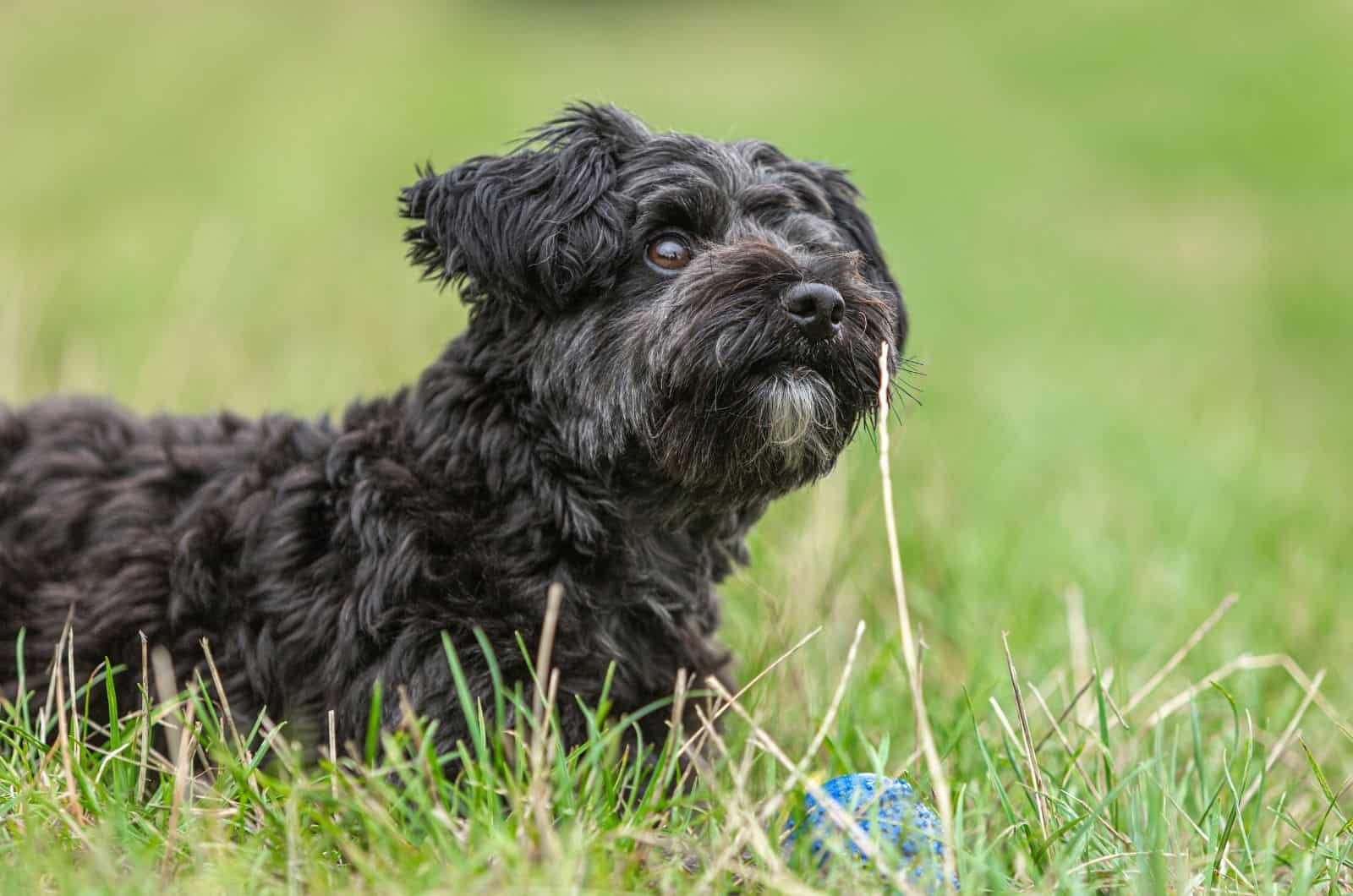
How To Rate The Height & Weight
Describing the way a teacup Yorkiepoo looks is like talking about your favorite food. You get that warm feeling around the heart.
Growing big with such small parents is impossible. Every inch makes a difference, which is why the teacup Yorkiepoo grows up to nine inches in height. They can be as short as four inches. This itty-bitty size means that female Yorkiepoos will grow closer to the lower average.
Fitting them on your palm will clearly not be a problem. Due to their astonishing weight of six to ten pounds, carrying them in a bag or in your arms will increase the time spent together!
Coloring Inside The Lines
Designer dogs need variety in color, and the teacup Yorkie comes equipped with the possibilities of an apricot, black, white, brown, chocolate, red, cream, or silver solid coat.
Do not worry – there are multi-colored or ‘pattern’ options, too. Looking for the rare merle or sable teacup Yorkiepoo, or perhaps the partipoo… wait, that does not sound right.
The parti-Yorkiepoo! It has nothing to do with parties. Instead, it is short for “particular”. What is particular about it? It cannot have under fifty percent solid white or black while sporting patches in secondary colors over the entirety of its body.
Claims that their hair is hypoallergenic is somewhat true. Their low shedding potential is the real hero. No hairs flying around = unlikely allergic reaction. The hair itself does not have any particular hypoallergenic property.
The Teacup Yorkiepoo Is A Character And A Half
What are the personality traits of this small breed? Oh boy, are you in for the smallest rude awakening…
Playtime is their holy grail. You do not joke about this. Needless to say, they are spirited and industrious dogs. The teacup Yorkiepoo takes the rebellious potential from its Yorkshire Terrier parent despite being highly trainable. You might mistake it for a Bulldog in a Yorkiepoo’s body.
Punishment does not work on them, and if you scold them, they will eventually start resenting interacting with you. Keep a calm and assertive attitude with lots of positive reinforcement and you should be golden.
This mini-machine mixed breed will be your best friend if it is treated with respect. Socializing is natural for them as they prefer company over solitude. Leaving your teacup Yorkiepoo alone for hours is likely to cause separation anxiety.
Although the AKC does not acknowledge the teacup Yorkiepoo as a purebred, it will certainly give off the vibe of its parents’ legacy. They will be alert and protective to the best of their ability!
Stranger tolerance is excellent, unlike the Yorkshire Terrier’s smug looks. Living with other dogs and pets is welcomed by the teacup Yorkiepoo.
If the prospect of getting a Maltipoo or a Morkie was attractive to you, but you prefer smaller and less stubborn dogs, then the teacup Yorkiepoo is definitely the better fit.
A Word Or Two On Lifespan
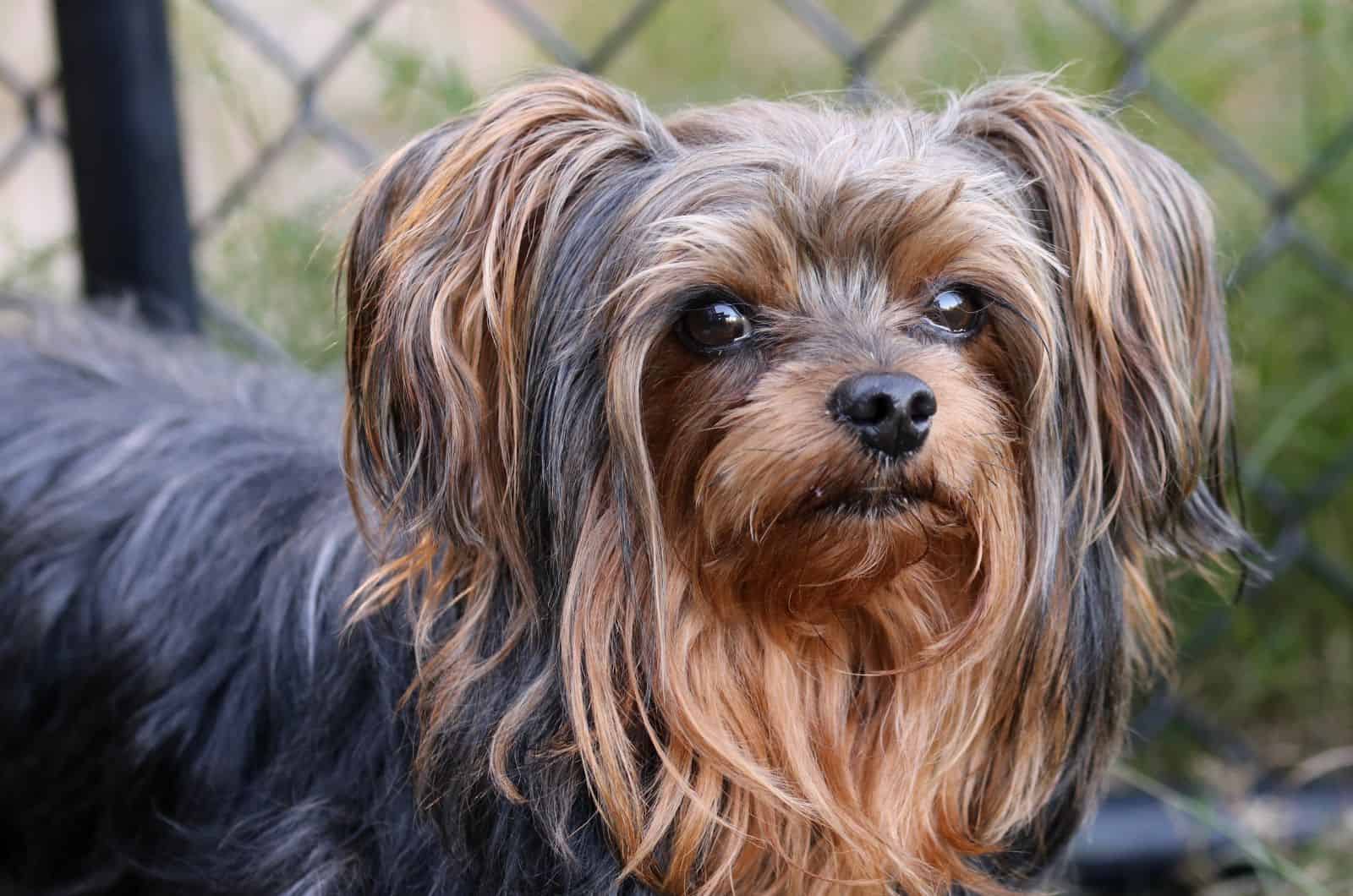
Long live the teacup Yorkiepoo! If you had concerns about the life expectancy of your Yorkiepoo, brush them away. The parent breeds’ lifespan is great, and you should be happy to read that a teacup Yorkiepoo can live anywhere from twelve to fifteen years.
Not being around for too long, there is no comprehensive research behind these exact numbers. With a good choice of breeder and optimal care, using the parent lifespans as reference, this is the number you can expect.
If you know someone who owned a teacup Yorkiepoo, you can see how long they had it. Alternatively, a vet will probably be able to shed some more light on this.
Does The Yorkiepoo Size Mean Health Problems?
Inevitably, all dogs have certain health issues. Whether breed-related, congenital, or caused by external factors, small breeds do have it tough.
A small size is directly related to a plethora of genetic issues simply due to the way recessive genes work. Breeding two dogs that have recessive genes exposes the offspring to many complications, so let us go through some of those that can affect your teacup Yorkiepoo.
Atopic Dermatitis
When allergens such as pollen, dust, or mold enter a dog’s respiratory system, or if food that the dog is allergic to is ingested, it makes the skin itchy. The natural reaction is biting and scratching, and if it becomes excessive, the skin gets damaged and wounds open.
Because teacup Yorkiepoos have a lush coat requiring daily grooming, leaving it unkempt will cause tangling of the hair. Trying to brush these tangles out will pull the hair from the follicle and might either cause or exacerbate this condition.
Epilepsy
Research has shown this to be the most frequent condition in dogs. In essence, an irregularity in the brain causes persistent seizures that often convulse your dog’s body. These are most often genetic-related.
Epilepsy can be caused by diagnosable conditions, such as brain trauma caused by injury or tumors. If a seizure occurs due to external factors (toxins or food-induced metabolic abnormalities), it is not considered as epilepsy.
Legg-Calve-Perthes Disease
Dog owners should be aware of this disease because it generally occurs in dogs whose breeders have poor practices. Believed to be of genetic origin, this disease manifests itself as restricted blood flow in the hip of the dog.
Without blood, the ball sitting atop the femur bone starts dying and eventually disintegrates into the hip itself. Progressively worse limping and pain while moving around are some of the main signs your teacup Yorkiepoo might have Legg-Calve-Perthes.
Patellar Luxation
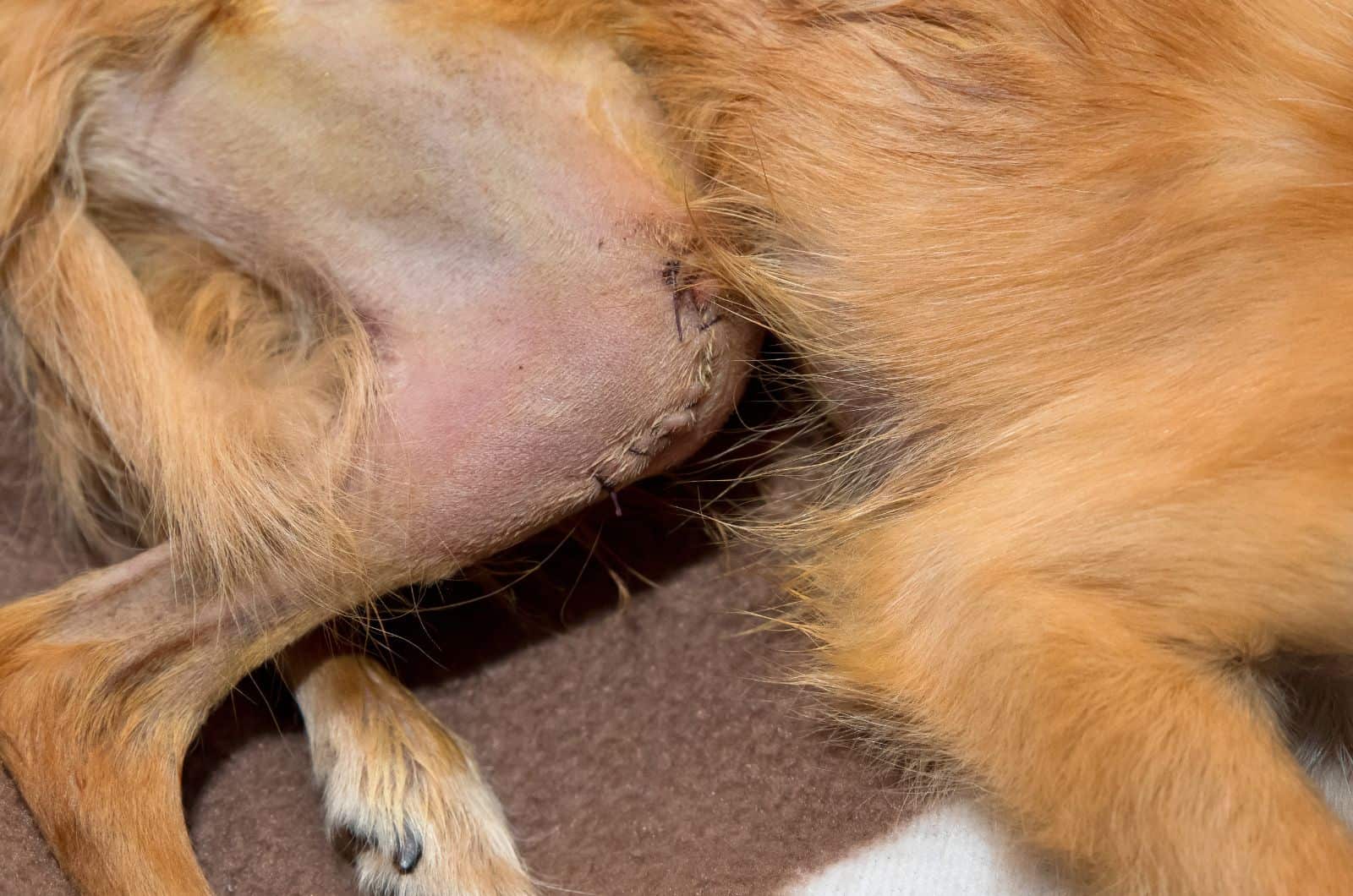
This condition is common in designer breeds, and in small dogs like the teacup Yorkiepoo and the miniature Poodle.
When the kneecap does not properly align with the two long bones of the leg, constant friction of the cartilage on the bone causes permanent damage to the dog’s joint. This is a congenital issue, so dog owners beware: choose your breeder carefully.
Patellar luxation treatments include OTC medication to reduce pain and swelling, but with aging, dogs become less mobile, and surgery is required for more severe cases.
Cushing’s Disease (Hyperadrenocorticism)
Excessive cortisol produced by the adrenal glands causes a chain reaction throughout the body. Cortisol (or cortisone) regulates a lot of key functions such as blood pressure, metabolic function, nutrient absorption, etc.
An overabundance of it in the system can send misinformation to the brain, and in the attempt to lower the concentration, overproduction of other hormones starts. This can damage the liver and/or kidneys, among other vital organs.
Gum Disease (Periodontitis)
This disease can go unnoticed for months or even years. Poor hygiene is the most likely cause, though small dog breeds are more susceptible to this condition.
Bacteria accumulates around the gums and pockets between the gums and the teeth, which causes tooth decay that can run deep into the tooth root and surrounding bone. Teeth can fall out, and if this is not treated, the bacterial infections can spread throughout the body.
The disease can be deadly if left untreated soon after being diagnosed. Treatment depends on the severity of the disease, but it is usually treated by antibiotics (in early stages), or potentially, surgery if it advances.
Canine Congenital Portosystemic Shunts (CCPS)
As the name says, this health issue is caused by inbreeding, and it is frequently a byproduct of poor breeding practices.
It can be summarized as diverted blood flow from the tertiary veins. The liver is the hub of blood filtration, and without it being able to clean the incoming blood, all kinds of pathogens can freely re-enter more crucial veins and spread around other vital organs.
Treatment is a combination of diet change, antibiotics, and supplements to try and lower the toxicity of the unfiltered blood.
Teacup Yorkiepoo Puppy Essentials
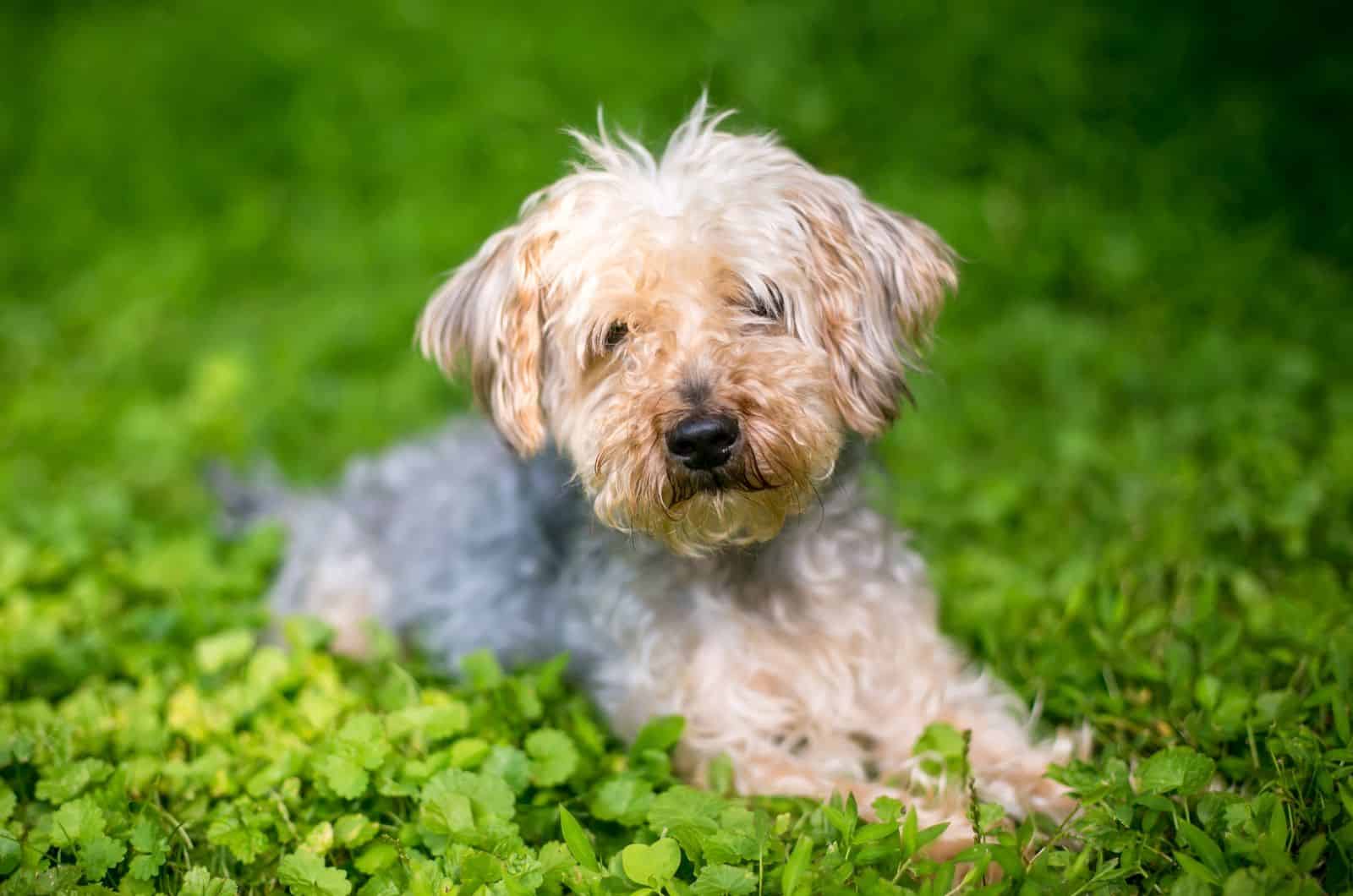
Knowing that this is a toy-sized dog implies that caring for a baby version of it cannot be smooth. There are many things to consider, including genetics, diet, breeder choice, exercise, price, and much more.
Diet Matters
Choosing the right food for a teacup Yorkiepoo will make your life easier in the long run. Dry foods, such as kibble will probably be harder to find for such a small dog. Look for specialized small-dog puppy food.
While their stomach is still developing and adapting to the switch from mother’s milk to solid foods, you want to avoid or use very little wet food in their diet. The surplus liquid in the packaging has a lot of added synthetic compounds that can make your teacup Yorkiepoo’s stool runny.
Raw meat diets should generally be avoided for smaller dogs, especially small-dog puppies. In addition, it would be very difficult and expensive to maintain a raw meat diet.
The teacup Yorkiepoo needs a well-laid-out dieting plan because of its genetic predisposition for congenital disorders affecting the gastrointestinal tract.
Mind The Exercise
Teacup Yorkiepoos will not take a lot of your time to get that energy out. They will be cute and funny while running around, but here is what you need to pay attention to.
Their size makes them very vulnerable and sensitive. Injuries can occur very easily even in adult teacup Yorkiepoos. A puppy is fragile because its bones have not matured yet; therefore, handle playtime as a gentle activity, and avoid using heavy items as part of a game.
Small children should be taught to carefully touch the dog because they do tend to grab dogs by the tail, swoosh them around, etc. Since the dog is friendly towards strangers, make sure to pay attention when it greets people at the door. It could be one step away from injury (pun intended).
Breeders And Price
Any breeder who you are suspicious of should be avoided. Pet shops and puppy mills – forget those. Proper breeding techniques and ethics should be the most important thing when considering a teacup Yorkiepoo.
Always ask a vet or someone at a dog club for breeder recommendations.
Expect to pay around $1,000 to $2,000 for a teacup Yorkiepoo. The rarer color combinations might cost you even more. Do not forget… you can always check your local shelter for a teacup Yorkiepoo.
Read also: 9 Best Yorkiepoo Breeders in the U.S.
Decision Time
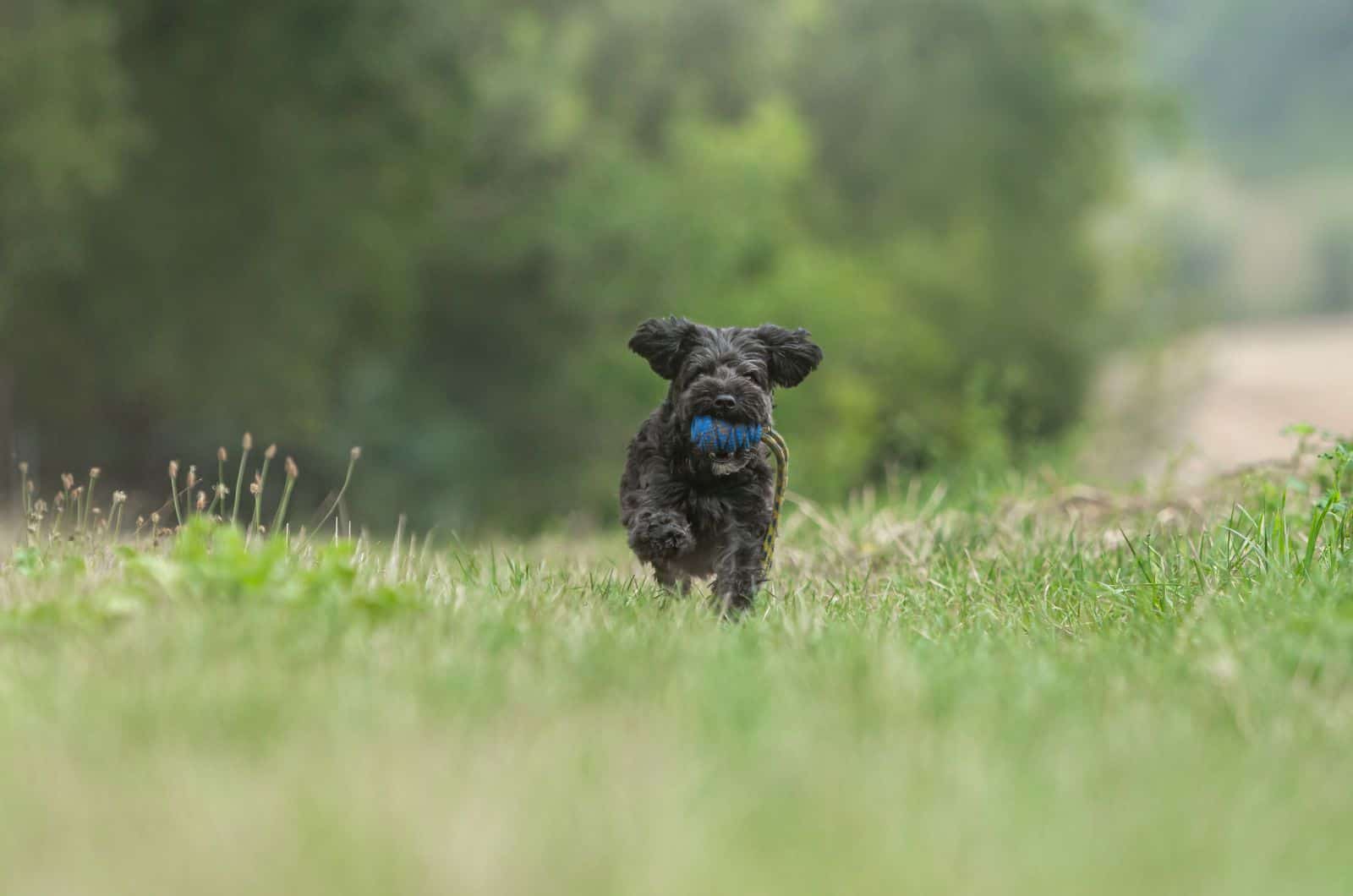
We covered everything you needed to know before making the right decision for yourself. Teacup Yorkiepoos are immensely popular, and that is not because they are adorable or sweet. They are intelligent, playful, loyal, and brave.
They do not let their size stop them from loving you like a giant dog would. Perhaps they love you even more because they can get closer to you and feel your gentle and soothing touch.
Getting a teacup Yorkiepoo cannot be a mistake if you imagine it by your side while reading. This is where you go and look at breeders near you. Go on…
Read Next: 12 Yorkie Poo Haircuts That Are Trending Right Now
